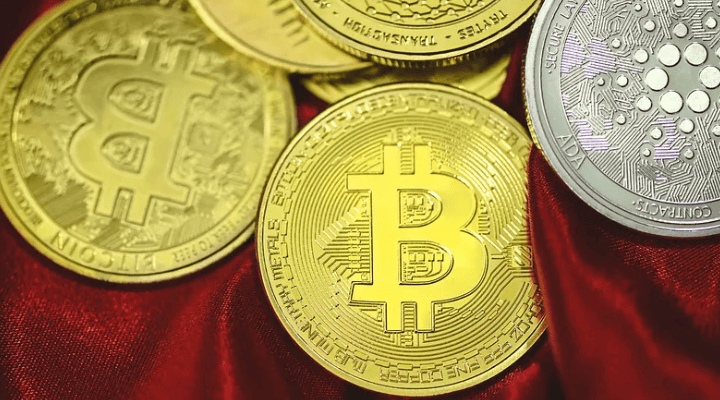Year 2009 — the global crisis has drastically fluctuated the global market at one fell swoop, causing banks, stocks, lenders, investors and other pillars of the economy to go to the wall.
Consequently, the assets, whose value was determined depending inter alia on sole government regulations and dubious “trust” as well as certain commodities and other factors considered as constrained or untrustworthy. Hence, the urge of “free money” was at its utmost, and that is when this concept ultimately left the papers.
Abruptly, the enigmatic personality appeared on the Internet presenting an inexplicable novelty — a cutting-edge digital currency with a distinct limited amount of 21 million units which ought to be personally mined. Although the prosperity of this coin was a foregone conclusion, it is still a question whether Satoshi Nakamoto knew that his (or her, or their) brainchild named Bitcoin would profoundly shape the new vector of global economy and technology.
The Bitcoin would later become a symbol of cutting-edge unfettered money, a way to a brave new world, sort of omen of almost utopian economic perception. However, from the down-to-earth point of view and as a consequence of mild tarnishing by influencers and marketing fraudsters, the Bitcoin was made a point about as a winning trading option and profitable trading option, which is quite true — Bitcoin numerously showed its skyrocketing growth, spurring the common newcomer to raise a logical question: “What would have been if I bought BTC at its lowest? Maybe I would be a millionaire or something”. But the truth is actually much deeper.
Painting a Picture: It’s 2009, and I purchased Bitcoin. What’s next?
It is now evident that Bitcoin was worth being held, and such long-scale custody would certainly turn out to be profitable. But this is deductible only from the relevant state of things. By contrast, it is essential to scrutinise the potential of BTC in the context of the period.
Accordingly, Bitcoin was not as acquainted with as it is today, and what‘s significant, its reputation was surrounded by vagueness, informational speculation and complexity. By and large, the digital asset was taken rather with a certain prejudiceness and caution, and only the most insightful got a full understanding of its game-changing nature. The Bitcoins were used as a payment method for pizza, or namely as a winning prize in certain esports tournaments. The initial idea of the digital currency concept was brought into common realisation long afterwards.
But before we look at Bitcoin’s state-of-things closer, it is crucial to systematise the potential user experience that prevailed in that day and age. There is no secret that cryptocurrency is considered to be volatile, as it is the cornerstone of the digital assets, and it gives a winning opportunity for traders to gain more profits and carry out certain financial operations by assessing the investment risks with chances of skyrocketing profits. As a matter of fact, the volatility is comprehensively natural for crypto assets due to the fact that its demand is not being artificially regulated but totally depends on the supply, demand, pure reputation and the limited amount of currency’s units, what remarkably indicates crypto as a self-sustainable stock entity which value is driven only by its users.
That state-of-things, however, stimulates preconception coming from the old-school investors. The negative reaction of the traditional trading realm can be briefly summarised by the iconic market player Warren Buffet:
“Something like Bitcoin, it is a gambling token, and it doesn’t have any intrinsic value. But that doesn’t stop people from wanting to play t2he roulette wheel”
Indeed, the lack of essential crypto awareness leads to a massive bunch of misunderstandings. Hence, the unique crypto investment risk’s framework requires the new means of diversification, which is absolutely contrary to the stock shares scenario. For example, the crypto portfolio is coined more complexly and demands the completely high-end risk assessments. Nevertheless, the parallel between classic stock market and digital currency could be drawn at the moment. The latest market charts indicate that BTC, ETH and other cryptocurrencies are becoming more stable, meaning less volatility is observed. That, in fact, says about the change in the investors’ behaviours and strategies, as they completely differ from the ones in the past.
But what tendencies were shaping the risk management in 2009? Which options of trading did the crypto enthusiasts determine? Apparently, the earlier phases of BTC market condition can be characterised as steady, as the price of the asset remained at the range from $2 to $14 on average, hence it is absolutely clear that the investors turned to the holding or dollar-cost averaging strategy. This argument becomes more sound with the numerous cases, depicting crypto users who stored Bitcoin since 2013 and then forgot the password to its storage.
Surely, it was not possible to tell whether Bitcoin experienced the overwhelming boost or remained within a certain price range in 2009, but emerging skyrocketing pumps of the asset, which resembled the volatility of crypto, indeed attracted many newcomers and short-traders. However, as mentioned earlier, the volatility of Bitcoin and crypto market overall has been recently reducing. Does this make BTC a poor trading option, devoid of its unique feature? As a matter of fact, no. Bitcoin is showing the state-of-things pretty typical of it, as a rapid fall and consequent low volatility is a characteristic scenario for the asset, which resulted in peaking pumps, and that is what many experts forecast to be with BTC. For instance, according to AMBCrypto, the most bearish estimation of the cryptocurrency’s value is $21095.20, but the optimistic (and tangible) prognosis states that BTC will definitely hit the dizzying price of $210799.42.
What is more, the reputation of crypto is being advanced in this moment, hence the crypto awareness is growing and digital assets are though of decently. The latest case in point: Ukrainian exchange WhiteBIT carrying out the educational collaboration with state-owned National University of Kyiv-Mohyla Academy — one of the leading educational establishments in the country and the oldest university in the Eastern Europe.
Ultimately, Bitcoin remains the essential case in point of decent investment option and, regardless of the ones keen on securities trading, popular and (finally) understandable in terms of its future.
The question is up: would you have bought Bitcoin, even given certain forecasts and outlooks? I don’t think so. Still, that is the essence of the trading, especially within the crypto industry. But could such tendency occur with the companies shares or other securities?
Can Traditional Assets Be As Volatile As Crypto?
Presumably, well-known investors such as Warren Buffet, Charlie Munger, Bill Gates etc are considering crypto a bubble due to its volatility. But how does that indicate the technicalities of the classic stock market?
Let’s regard the Hermes company share as an example. The company share always experienced a slow but a steady go with no dramatic fluctuations. Consequently, its growth only intensified, resulting in $2032,75 as of June 8, 2023. Such state-of-things make a better part of traditional market shares a top option for durable hold in order to ensure the slow yet guaranteed passive income. The price predictions for Hermes do not forecast certain radical alterations and do not vacillate above the $2289,04 at its most optimistic scenario.
In fact, the stability of growth is the factor foremostly fond of the major traditional market players, and at the same time the ground reason for them to relatively consider the crypto sort of Ponzi scheme due to its radical dumps. But the truth is, as was mentioned before, volatility is both a way to gain profits and indicator of the crypto’s direct dependance on the natural events.
Closing Remarks
In a nutshell, it is completely clear that the crypto assets are much more reliable in terms of market dependance and security, although their fluctuations tend to be rather steep, which make them outstanding investments compared to the securities. As timeline shows, digital currencies are perfect as for long term holding and averaging as for short-term trading with a promising results. Contrary to crypto, traditional shares are profitable only within a vast period and pretty limited in trading features.
Nevertheless, it is also crucial to point out that making price predictions both for crypto and securities is almost impossible, even given the most insightful data. Still, the more we study past tendencies, the more efficient we can contribute to making the outlooks for the future. The global processes (and economical as well) tend to repeat themselves in certain means, that’s why it is vital to conduct the analyses of the yesteryear.

 English
English
 Deutch
Deutch
 Espanol
Espanol
 Francais
Francais
 Portugues
Portugues
 日本
日本
 한국인
한국인
 Türk
Türk
 Русский
Русский
 Tiếng Việt
Tiếng Việt

